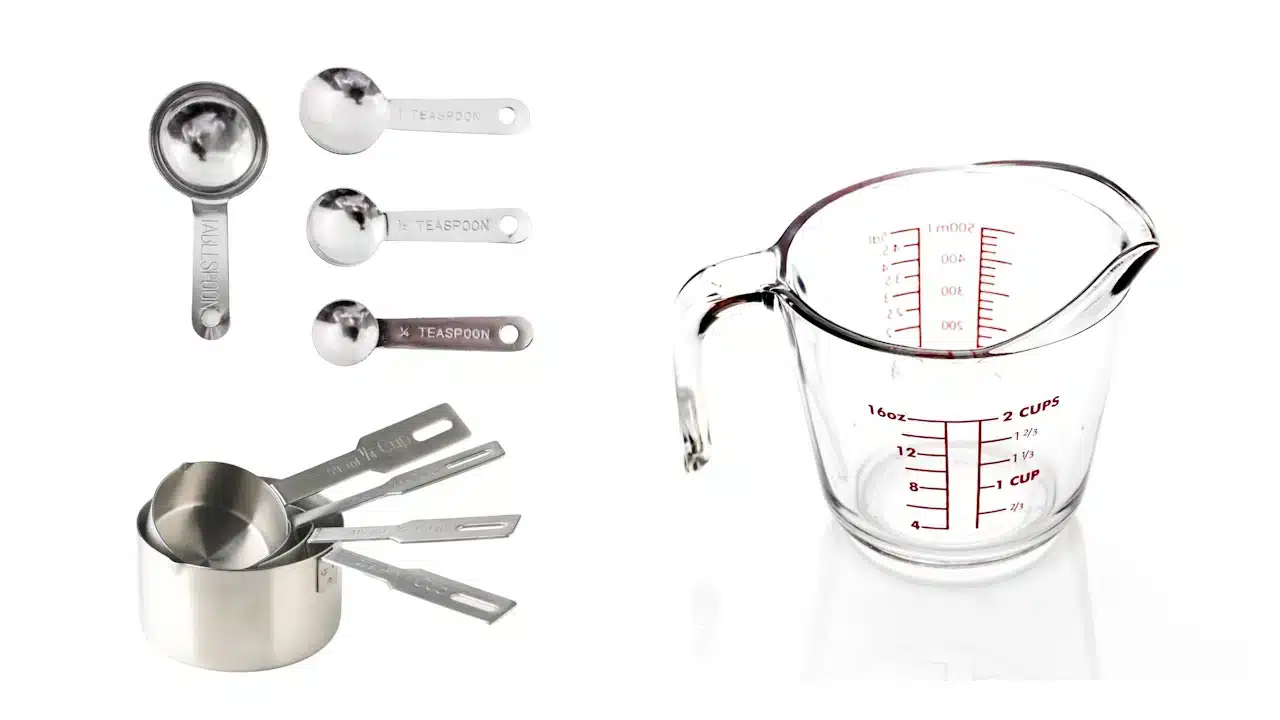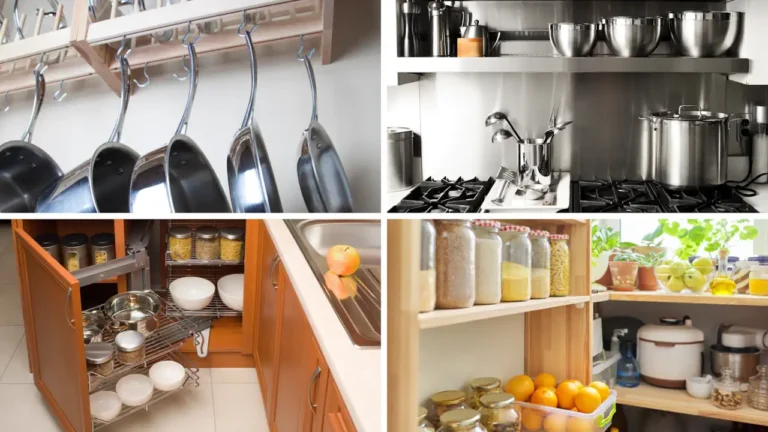Measuring Cups And Spoons Uses: Easy Essential Insights for Bakers (2025)

Measuring cups and spoons uses. I used to think that all measuring cups and spoons were created equal. They’re just tools for measuring ingredients, right?
However, after a few baking mishaps, I realized that using the wrong type of measuring tool can greatly affect the outcome of a recipe.
So, I decided to research and experiment to understand the differences between measuring cups and spoons and how to use them correctly.
In this article, I’ll share my findings and tips for effectively measuring cups and spoons in the kitchen.
Understanding the nuances of these tools can help you achieve better results in your cooking and baking endeavors.
Understanding the Differences between Measuring Cups and Spoons
Understanding the differences between measuring cups and spoons can be confusing, but knowing that each utensil has its specific use and measuring capacity is essential.
Measuring cups measure larger amounts of ingredients like flour or sugar and come in various sizes, from 1/4 cup to 1 cup.
On the other hand, measuring spoons are used for smaller measurements, such as teaspoons and tablespoons, with some sets also including fractions of teaspoons.
It’s important to note that measuring cups and spoons should be used in various ways, as the measurements need to be more accurate.
Measuring cups are typically made of glass or plastic while measuring spoons can be made of metal or plastic.
By understanding the differences between these two essential kitchen utensils, you can ensure that your recipes are accurate and that your cooking and baking are successful.
Using Measuring Cups for Liquid Ingredients
Pouring precise amounts of liquids into your recipe can make or break your dish, so it’s crucial to master these specific kitchen tools.
Here are three tips for using measuring cups for liquid ingredients:
• Always use a liquid measuring cup, which typically has a spout and is designed to hold liquids accurately.
• Be sure to measure at eye level for the most accurate measurement possible.
• When pouring, slowly pour the liquid until it reaches the appropriate line on the measuring cup. Don’t tilt the cup to get the last drop out, as this can affect the accuracy of your measurement.
Following these tips ensures that your liquid ingredients are measured accurately and that your dish turns out perfectly.
Using Measuring Spoons for Dry Ingredients
Knowing how to measure spoons correctly is essential when adding dry ingredients to your recipe. First, ensure the scoop is level before dipping it into the component.
Then, use a straight edge, like the back of a knife, to scrape off any excess. Never pack the ingredients into the spoon, as this will result in too much being added to the recipe.
Using the correct measuring spoon size for the measured ingredient is also essential. For example, a tablespoon of baking powder will require a tablespoon measuring spoon, not a teaspoon.
By following these simple steps, you can ensure your recipe turns out perfectly every time.
Conclusion: Measuring Cups And Spoons Uses
In conclusion, measuring cups and spoons are essential tools in any kitchen. They come in handy when measuring ingredients for cooking and baking recipes.
Measuring cups are best used for liquid ingredients, while spoons are perfect for dry ingredients. Using a measuring cup with a spout ensures exact measurements when measuring liquid ingredients.
On the other hand, measuring spoons are ideal for measuring small quantities of dry ingredients, such as spices and herbs. They allow for precise measurements and ensure that no one flavor overpowers the recipe.
Therefore, it is crucial to have both measuring cups and spoons in your kitchen to ensure the best results in your cooking and baking endeavors.
So, investing in measuring cups and spoons is a must. Accuracy is critical in cooking and baking; having the right tools can make all the difference.
FAQ:
Q: What is a dry measuring cup?
A: A dry measuring cup is a cup that is used to measure dry ingredients such as flour, sugar, and spices.
Q: Should I use a glass or steel measuring cup for dry ingredients?
A: Using a set of stainless steel measuring cups for measuring dry ingredients is recommended as they are more durable and easier to clean than glass measuring cups.
Q: What are the standard sizes of dry measuring cups?
A: The standard sizes of dry measuring cups are 1/4, 1/2, and 1 cup.
Q: How do I use a dry measuring cup to measure dry ingredients accurately?
A: To accurately measure dry ingredients, use the back of a butter knife or a flat surface to level off the element at the top of the measuring cup.
Q: Can I use a liquid measuring cup to measure dry ingredients?
A: Using a liquid measuring cup to measure dry ingredients is not recommended, as the measuring lines are designed for liquid measurements and may not be accurate for dry ingredients.
Q: What is a sticky ingredient, and how do I measure it?
A: Sticky ingredients such as honey, molasses, and peanut butter can be measured more accurately using a plastic measuring cup or by greasing the measuring cup with non-stick spray before measuring.
Q: Should I hand wash or put my measuring cups in the dishwasher?
A: Measuring cups are safe to put in the dishwasher, but hand-washing is recommended to prevent residue or build-up.
Q: Can I use identical measuring cups for wet and dry ingredients?
A: Measuring cups come in both dry and liquid versions, and using them for their intended purpose will allow you to measure both types of ingredients accurately.
Q: What is the difference between liquid and dry measuring cups?
A: Liquid measuring cups typically have a spout and are designed to be filled to the top so that the measurement is accurate for liquids.
Dry measuring cups are more compact and usually have a flat top for leveling off ingredients.
Q: Can I use measuring spoons to measure dry ingredients?
A: Yes, measuring spoons can measure dry ingredients such as baking powder and salt.
Q: What types of measuring cups are best for measuring wet ingredients?
A: Measuring cups designed for wet ingredients typically have more extensive measurements and are made with a spout for easy pouring of liquids.

